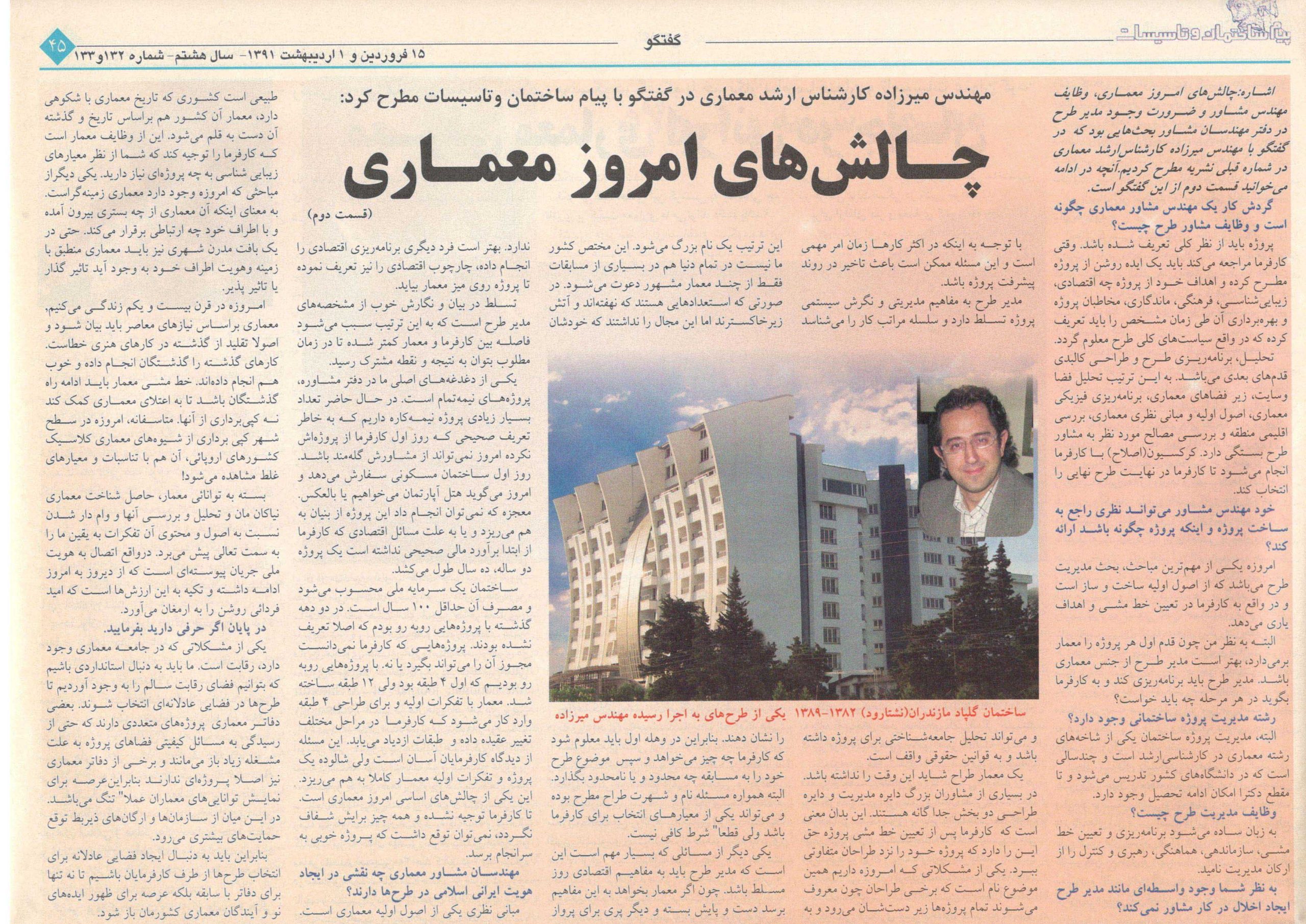Interview with Payam-e Sakhteman va Tasisat Biweekly
(With Ms. Arezoo Afsharzadeh) | March 6, 2011 & March 21–April 20, 2012
Q: What do clients want?
Architecture engages more with humanity’s intrinsic essence – art – than with science, rulers, or numbers. Art springs from the architect’s inner self, manifesting true ideal beauty – a principle Engineer Mirzadeh profoundly emphasizes.
Keyhan Mirzadeh holds an M.Arch from Iran University of Science & Technology (1998) and currently teaches architecture at Azad University. As principal of Mirzadeh Architectural Design Consultancy, we discussed the role of architectural consultants:
Q: Define architecture from your perspective.
A: Architecture comprises two core elements: physical mass/volume shaping the building’s form, and the architect’s emotion, thought, and taste that breathe life into it. Its scientific aspect involves academic standards, while its artistic dimension emerges from the architect’s subconscious.
An artist animates objects through their spirit, engaging passionately with them. This is how architects discover their creative path amid experiences and awareness, channeling innate talent toward purpose. By understanding components and their internal connections within a holistic expression, designers identify their creation’s soul and identity – flowing from the creator’s subconscious. Thus, architects dissect their work, journeying inward. The design born within draws them inside, as Rumi illuminates:
O Life! My body, my strength—all are You.
My soul, my heart—O Soul of my soul—all are You.
You became my very self—thus all I am is You.
I ceased to be in You—hence all I am is You.
Humans experience architectural space as both spectator and actor, forging connections between creator and audience. Clearer artistic communication yields explicit understanding and acknowledged message transmission.
Beyond aesthetics, architecture must respond to climate, function, structural integrity, mechanical systems, and construction codes. As Vitruvius noted, architectural excellence rests on Function, Construction and artistic expression
Q: How does industry differ from architecture?
A: Industrial work differs fundamentally. Industrialists know their end product when beginning; architects/artists cannot precisely define their goal until completion – sometimes realizing their vision remains unfulfilled. This creative risk is architecture’s thrilling challenge.
While economics and technology influence architecture, they don’t violate its spirit. Clients commissioning architects must recognize they engage a delicate creative process where designs form through the architect’s subjective criteria.
Q: What is architecture’s place in modern cities?
A: Cities embody cultural/historical heritage, reflecting evolving lifestyles and ideologies. A critical concern today is limited public recognition of architects. Globally renowned historical cities maintain contemporary architectural excellence because their citizens understand and pride in architecture – as seen in Isfahan.
In Tehran, however, beyond isolated works, significant contemporary architecture is scarce due to economic pressures. Architects follow societally imposed paths, including municipal regulations that often lack solid basis and restrict creativity. Clients frequently impose visions without consulting architects, reducing designers to executors of client/municipal directives rather than creators.
This troubles me deeply. We possess skilled architects and rich heritage. As the proverb goes: “Without a good past, one cannot have a good future.” Our glorious past doesn’t guarantee a bright architectural future.
Q: What criteria should architectural consultants consider?
A: Architecture is high-risk labor requiring multiple criteria:
- Identity/authenticity– sorely missing in our urban fabric, not due to inability but lack of opportunity for deep, original creation. Authentic work avoids copying, replication, imitation, or translation.
- Sustainability– In our eco-conscious era, architects must advance environmental preservation, human tranquility, and resource conservation.
- Simultaneous considerations: Climate, accessibility, site context, terrain, materials, client aspirations, user needs, site potential, surroundings, standards, zoning codes, and future development.
Q: How are economics and architecture related?
A: Economic currents drive architecture. Clients primarily seek cost-effectiveness – sometimes excessively, stripping projects to “incomplete structures” resembling “tailless lions.” This confounds architects pursuing authentic, identity-rich outcomes. Notably, contemporary masterpieces often achieve economic efficiency through architectural ingenuity, not imposition.
Q: Does a project originate with architect or client?
A: Projects succeed when architect and client reach consensus without imposition. Clients must clearly define needs – many lack decisive programs. Architecture is commissioned work: clients must grant architects time and creative freedom to explore solutions.
Q: What is an architectural consultant’s workflow and duties?
A: Projects require clear definition. Clients must articulate: economic/aesthetic/cultural goals, longevity, target users, and operational timelines – establishing project policies. Subsequent steps include analysis, programming, and physical design covering: spatial/site analysis, sub-spaces, physical planning, theoretical principles, climate studies, and material selection. Client corrections lead to final design selection.
Q: Can consultants advise on construction approaches?
A: Project Management (PM) is fundamental to construction. Since architects initiate projects, PMs should ideally be architects who plan phases and guide client expectations.
Q: Is Construction Project Management a formal discipline?
A: Yes – it’s an architectural M-Arch/PhD specialization taught nationally for years.
Q: What are a PM’s duties?
A: Simply put: planning/policy-making, organizing, coordinating, leading, and controlling.
Q: Doesn’t a PM intermediary disrupt workflow?
A: PMs bring managerial expertise, systemic vision, and hierarchy understanding. They conduct sociological analyses and know legal frameworks. Architects may lack this bandwidth – large firms often separate design and management divisions. Clients may engage different designers after policy-setting.
A current issue is “star architect” monopolization where fame attracts all projects – a global phenomenon where few renowned architects dominate competitions. Hidden talents lack opportunity.
Thus, clients should first define needs, then hold limited/unlimited competitions. Designer fame may influence selection but isn’t sufficient.
Critically, PMs must master contemporary economics. Architects shouldn’t be economically constrained – others should establish financial frameworks before designs begin.
Strong PM communication bridges client-architect gaps for timely consensus.
Q: How do consultants contribute to Iranian-Islamic identity? What if clients request Western designs?
A: Theoretical foundations are primary. Architects in historically rich nations naturally draw from their legacy. Consultants should educate clients about aesthetic needs.
Contextual architecture is vital – examining a design’s origins and environmental dialogue. Even modern urban fabrics require contextually responsive architecture.
In the 21st century, architecture must address contemporary needs. Past imitation is erroneous; predecessors excelled in their era. Architects should extend their path to elevate architecture, not copy it. Unfortunately, we see misguided replicas of European classical styles in our cities!
Understanding ancestral architecture through analysis will advance excellence. Connecting to national identity is an enduring continuum – reliance on these values promises a bright future.
Q: Final thoughts?
A: Unhealthy competition plagues our field. We need standards enabling fair project selection. Some firms juggle excessive projects compromising quality; others get no projects. Relevant organizations should increase support.
We must cultivate equitable selection environments – opening opportunities not only for established firms but emerging talents shaping Iran’s architectural future.
Thanks a lot
Keyhan Mirzadeh
March 21–2012
![دفتر معماری [ما] میرزاده و همکاران | تجربه ای منحصر به فرد در خلاقیت هنر و معماری](https://keyhanmirzadeh.com/en/wp-content/uploads/2025/05/keyhanmirzadeh-logo2.png)


